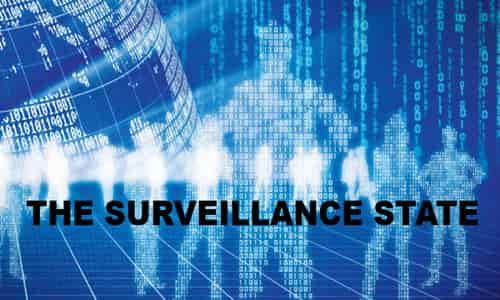The first time I saw a camera use facial recognition for autofocus assist I immediately remembered the original Terminator film when the terrifying cyborg creature walked down a darkened alley, its targeting and AI systems scanning the faces of passers-by.
This technology has been around for a few years now, but in the early stages it seemed about as reliable as voice recognition, that is to say, laughably bad. So I wrote it off,
But, in the intervening time, it's made strides in an Orwellian direction. Today, it's on social media, scanning faces and logging them along with massive amounts of metadata. The health industry, as well, has been quick to jump on board. Thousands of doctors and health facilities insist on scanning the faces of new patients or updating their files for existing patients.
Thinking about the privacy implications, the picture becomes very frightening, very quickly. Microsoft recently announced the release of a service that can guess your emotional state from a photo. Before that, they produced an age guessing app, which had a sneaky ad-serving element to it.
The first generation of facial recognition software worked similarly to the system by which fingerprints are matched, by correlating similarities, their arrangement, and proportions.
Today, these systems are not only much more powerful in terms pf processing power, but they are also far more sophisticated. Possessing AI components, modern face detection technology (FDT) is very close to displaying human level abilities in certain respects.
Beyond recognizing faces, today's systems can log and utilize an array of other types of biometric information to verify an individual such as hair style, body proportions, stride length and more. These kinds of markers are usable by the system even in very low-resolution images, as low res as 36x36.
Fortune magazine reported last year that a system known as Churchix is creating a database of people who are members of churches. As early as 2014, it became possible to do reverse Google searches using anonymous photographs of people.
There is a deluge of biometric data that's being sucked up by voice command software, fingerprints, and facial recognition systems in addition to massive amounts of metadata such as phone calls, GPS info, and electronic receipts.
You can be identified and located at almost any time or place. As the late radio commentator, Paul Harvey, used to say, "You can run, but you can�t hide."
The issue has been a serious one for a long time now. But the culture of security has ratcheted things up to a terrifying degree.
Two events have made the reality of personal surveillance a very near and present one: the passing and subsequent bolstering of The Patriot Act, and the revelations given to us by NSA whistleblower, Edward Snowden.
In the shadow of September 11th, 2001, we allowed the government far-reaching powers to curtail our privacy and freedom.
Until Snowden made his startling revelations and fled the country, many of us didn't really believe that anyone, not even the government would want to record massive amounts of personal data. As time has progressed, the fact of massive overreach into our private lives is undeniable.
Today, we don't sit in our homes and offices wondering how we would feel 'if' we were being surveilled, we think instead of whether we've said something too near to our smartphone or written an email that might be construed as a national security threat.
The FBI has openly admitted to having 52 million faces on file, of which 1.5 million are in US prisons today.
The size of the total "criminal population" cannot by any stretch of the imagination come anywhere near to 52 million. That gives you about a 1 in 8 chance of being in that database- and they undoubtedly have more.
Technology, such as facial recognition, is here to stay; it�s not going anywhere. The convenience factor that consumers enjoy and the data sucking potential of big business is far too compelling.
But, on a personal level, what would it take to get the average American to take a critical look at the use of their favorite toys?
 By PNW Staff July 20, 2016
By PNW Staff July 20, 2016
 By PNW Staff July 20, 2016
By PNW Staff July 20, 2016